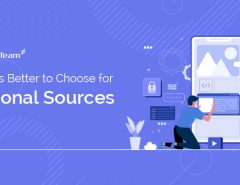Your website serves as the cornerstone of your digital marketing strategy. Understanding the difficulties that various visitors have to tackle is essential to designing a strong website user experience.
Your website has become a more potent weapon than ever in today’s marketing scene. Your website is a salesperson who works for you 24 hours a day, seven days a week, and as such, it has the potential to be your most valuable asset and the focal point of your marketing efforts.
Use HubSpot’s drag-and-drop website builder to get started
Rapidly shifting digital trends, on the other hand, might make your website appear ancient and out of date. While a redesign may be beneficial in some cases, you may not have the time or resources to devote to such a major project.
To assist you in overcoming this obstacle, we’ve compiled a list of ten simple strategies to make your website more helpful and valuable.
Your website serves as the cornerstone of your digital marketing strategy. Understanding the difficulties that various visitors have to tackle is essential to designing a strong website user experience.
1. Make liberal use of white space
Clients have complained on several occasions that their website has too much empty space and that this underused real estate should be used to advertise more of their services. White space, on the other hand, is critical to effective design. White space improves readability while also allowing the user to focus on the things around the text. In this process, a professional web design Sydney may be really beneficial.
White space surrounding text and headings, according to Crazy Egg, boosts user attention by 20%. White space may make your website feel spacious, fresh, and contemporary, and if your branding matches these qualities, it can help you express that sense to your users. However, one disadvantage of white space to consider is that it does take up room.
Too much white space may be replacing useful information if you’re trying to get a lot of stuff above the fold (the section that is instantly seen without scrolling). The idea is to strike a balance between putting the most relevant information at the top and leaving enough space around it to showcase the image and/or text.
Consider Sara Dunn’s website, Sara Does SEO. There’s a lot of white space in her UX straight away, drawing your attention to Sara’s appearance and what she can accomplish for you. This helps the reader to concentrate on the most significant aspects of the story. Each component of the webpage also has a clear headline and a few supporting points, making the material easier to assimilate.
2. Improve the speed of your website
Waiting too long for a website to load is one of the most aggravating experiences for web users. People are accessing material from all over the world on a variety of platforms thanks to the advent of mobile devices. They anticipate a quick response for the content they desire when surfing online at Starbucks or watching TV on their laptop.
They generally bounce if they don’t receive it. Slow page loads are inconvenient for users and can be a cause of annoyance; many users just do not have the time to wait.
According to Section.io, a five-second delay in page load time can raise the “bounce rate” of your website by more than 20%. Whoa.
So, how do you go from here? Calculate your score. Google provides a free service that allows you to check the speed of your website. Google will also make recommendations for how to improve your load speed on both mobile and desktop.
Start by compressing all of your photos before putting them onto your website to optimize page performance. Image file size is one of the most common causes of sluggish page speed; companies like compressor.io may help you substantially speed up each of your webpages.
Barnes and Nobles is a wonderful example of a quick load. Your local Barnes and Nobles loads swiftly on any device. Taking extra precautions to load some key pieces first, so you know the material is on its way. Take a look for yourself.
3. Make use of appealing call-to-action buttons
Customers are used to interpreting visual signals to determine which material is most essential to them. CTAs that are clearly designated with an action word make it easier for your website visitors to traverse your site and discover exactly what they’re looking for in the places they expect to find it.
Color and color psychology should be considered while building buttons for your website. In a study conducted by Maxymiser, researchers discovered that by experimenting with color variations and action language, they were able to boost clicks to the Laura Ashley website’s checkout page by 11 percent. Different colors convey various messages. Consider the message you want to send to a user (trust, experience, intellect), and then pick your colors carefully.
WUFOO is a wonderful example of how to use calls to action effectively. The whole company’s page is action-oriented, with buttons encouraging users to take the next step. You’ll notice the usage of time-sensitive language like “Sign Up Now” and action-oriented language like “Get Started” towards the bottom of the page. These are active action phrases that encourage and direct the user to take the next step.
The actual words you choose for your buttons is a second item to think about. A verb or an action word should be included in the text to entice the user to take action. The amount of emotional identification that a word inspires is a big factor in choosing the proper words or psychological triggers. There will be no action if there is no emotional connection. As a result, make your remarks bold, timely, and action-oriented.
4. Make use of hyperlink distinction
When you add a link to a page, you’re telling the user that you want them to go there. Make sure that visual signals help you identify linkages. The reader’s attention is drawn to the underlined and differently colored text, which indicates that this is a link that should be clicked.
Karyn Graves’ research demonstrates that the average online user recognizes blue and highlighted text as links and knows to click on them. Exploiting consumer assumptions and what they already know about how to utilize the internet is essential for success.
You don’t have to invent the wheel when it comes to hyperlink distinction. Following the rules might be your best ally in this situation. Blurring and removing the color from the design and seeing what sticks out is an easy technique to assess how effective your links are.
5. Use bullet points to separate vital information
Bullet points will allow the user to swiftly obtain all of the information they require, including advantages, solutions to their problems, and significant product/service features, all in a short amount of time. This will make your offers more appealing and allow your users to obtain all of the information they want. You also don’t have to stick to the typical method of a basic circle.
You may also be creative with your bullet and aid the reader further using graphics that symbolize your argument, thanks to the abundance of fascinating symbols available. Why are you doing this? Because it pushes you to focus on the most critical ideas without becoming bogged down in language or details.
One.org is an excellent example of non-traditional bullets. They utilize icons as bullets on this page to emphasize their accomplishments in an easy-to-read format. Take note of the white space around the bullets, which allows you to concentrate on each part.
6. Make use of pictures (wisely)
People are becoming smarter and faster at evaluating corporate websites before deciding whether or not to continue browsing. When visitors first come to your site, they can readily pick out a generic stock photo that they’ve seen elsewhere or that reflects the non-personal stock photography style. Using stock images may undermine trust and make your brand look generic and unoriginal. Regrettably, these connotations extend to your company as well.
In a case study conducted by Spectrum, Inc. of Harrington Movers, a New Jersey and New York City moving firm, they were able to boost page conversion by simply substituting a stock photo with an image of the actual moving team. By replacing the standard photo with a shot of their actual moving truck, they were able to achieve the same gain in conversion and confidence on the page.
What’s the bottom line? While stock imagery might be of great quality, it lacks the ability to link the consumer to the business.
At the end of the day, no stock photography will be able to express your brand, services, and goods as well as you can. Only your own photographs can achieve this while also properly communicating with your target buyer. Use photos strategically to reinforce the content and provide a visual break from the words on your website, but make sure they are relevant and non-generic.




